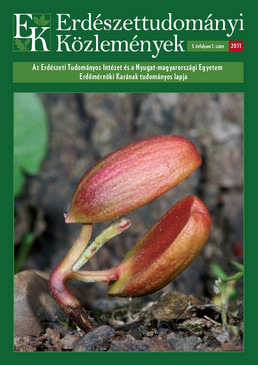Experience of biological control of chestnut blight in the Sopron mountains
Henriett Vidóczi
Correspondence
Correspondence: Vidóczi Henriett
Postal address: H-8726 Iharos, Kiss u. 1.
e-mail: vidoczi.henriett[at]sefag.hu
Abstract
There is single efficient method for the biological control of chestnut blight caused by Cryphonectria parasitica. The condition of succesfully using the method is to determine the vegetative compatibility types of the pathogen and to apply adequate, hypovirulent strains on the site. Curative treatments were carried out in a young chestnut grove at Ágfalva belonging ti the growing district of the Sopron mountains between 1996 and 2000. Regularly inoculating the area around the cankers, the trees almost completely recovered during eight years. Determining the virulence of the isolated strains and the eventual hypovirulence the easiest way possible was of primary importance during the applied biological control. In vitro studying the relationship of chestnut and the pathogen resulted in a rapid and reliable test method for practice.
Keywords: chestnut, Cryphonectria parasitica, biological control, compatibility type, hypovirulence
Open Acces
For non-commercial purposes, let others distribute and copy the article, and include in a collective work, as long as they cite the author(s) and the journal, and provided they do not alter or modify the article.
Cite this article as:
Vidóczi, H. (2011): Experience of biological control of chestnut blight in the Sopron mountains. Bulletin of Forestry Science, 1(1): 125-134. (in Hungarian)
Volume 1, Issue 1
Pages: 125-134
First published:
1 September 2011
Related content
1
Related content in the Bulletin of Forestry Science*
* Automatically generated recommendations based on the occurrence of keywords given by authors in the titles and abstracts of other articles. For more detailed search please use the manual search.
